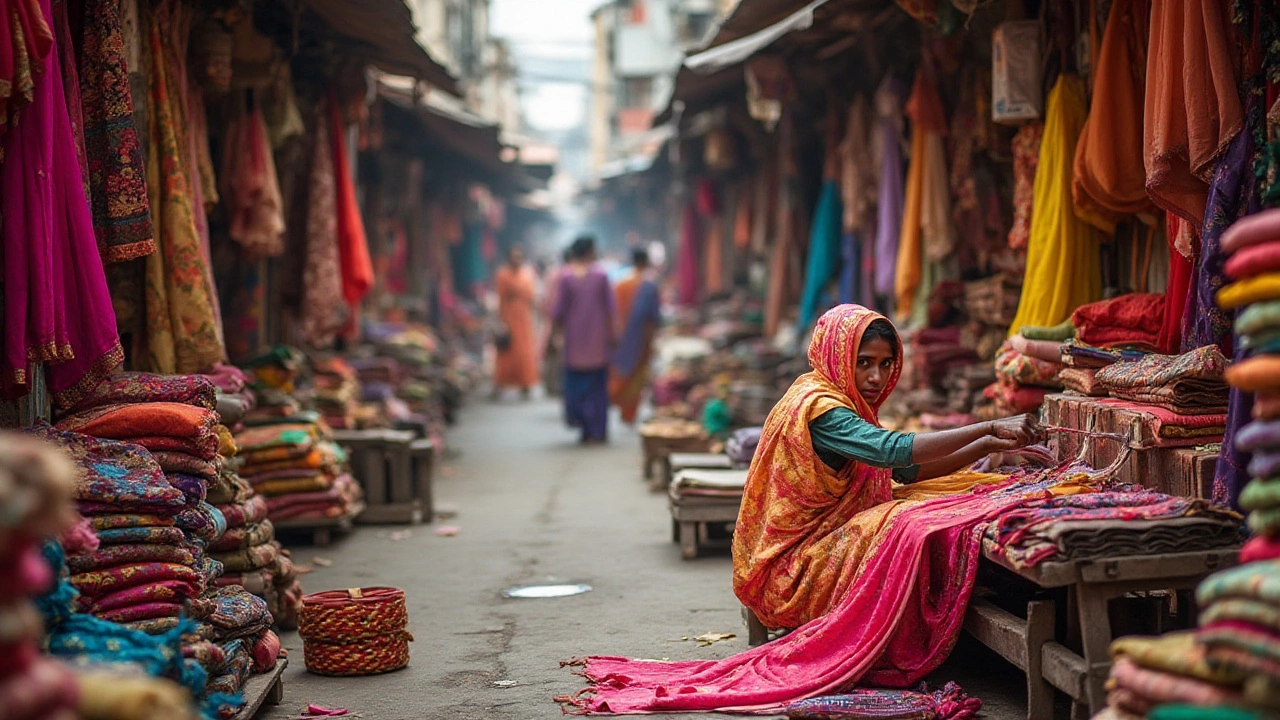Textile Industry in India: Overview and Opportunities
If you’re looking at manufacturing, exporting, or buying fabrics, the Indian textile industry is a place you can’t ignore. It covers everything from cotton yarn to synthetic blends, and it feeds a market that serves both domestic shoppers and global brands. In 2024 the sector contributed over 2% to the country’s GDP and employed millions, showing why it matters for the economy and for anyone wanting a foothold in manufacturing.
What makes India stand out isn’t just the volume of cloth it produces. It’s the mix of traditional skills – handloom weaving in villages – and modern factories that use automated looms and digital design tools. This blend keeps costs low while still delivering quality that big brands demand. Below we break down the main hubs, the trends shaping the future, and practical steps you can take whether you’re a startup or an established player.
Key Textile Hubs and Their Strengths
Surat in Gujarat is often called the fabric capital. It specializes in synthetic fibers, especially polyester, and houses large dyeing and printing units. Prices stay competitive because the city has a solid supply chain for chemicals and a deep pool of skilled workers.
Tiruppur in Tamil Nadu leads in knitwear. The city’s factories are geared toward fast‑fashion garments, and many global retailers source T‑shirts and sportswear from here. Proximity to ports like Chennai helps exporters ship quickly.
Bangalore may be known for tech, but its textile parks focus on high‑tech fabrics – moisture‑wicking, UV‑protected, and smart textiles. If you’re interested in innovation, this is a place to network with research labs and startups.
Other notable locations include Coimbatore for cotton yarn, Kanpur for leather‑coated fabrics, and Delhi NCR for fashion‑forward design houses. Each hub offers a unique mix of raw material access, labor expertise, and logistics support.
Current Trends and How to Leverage Them
Sustainability is no longer a buzzword. Buyers abroad ask for Eco‑friendly certifications, and Indian mills are adopting water‑recycling, low‑chemical dyes, and organic cotton. If you can show a clear sustainability plan, you’ll win better contracts and often command higher prices.
Digital printing is displacing traditional screen printing for short runs. It cuts waste and lets you respond to fast‑changing fashion trends. Investing in a few digital printers can expand your product range without huge capital outlay.
Automation is reaching even medium‑size units. Automated looms, robotic material handling, and ERP software improve yield and cut errors. Start small – maybe automate yarn winding first – and measure the savings before scaling up.
Export incentives from the government, such as the Merchandise Exports from India Scheme (MEIS), provide cash rebates for certain textile products. Register with the Export Promotion Council for Handicrafts (EPCH) to stay updated on eligibility.
For newcomers, the best move is to partner with an established local supplier. A short‑term contract lets you test product quality, delivery times, and communication before committing to larger volumes. Ask for references and, if possible, visit the factory to see processes firsthand.
Overall, the Indian textile industry offers a blend of scale, skill, and evolving technology. Focus on a hub that matches your product type, adopt sustainable practices, and use digital tools to stay agile. With these steps, you’ll be positioned to tap into a market that’s growing every year while keeping costs in check.

Exploring Surat's Renowned Textile Industry: A Hub for Fashion
Surat, a bustling city in India, has gained international recognition for its thriving textile industry. Known as the 'Silk City' of India, it stands out as a significant player in the global fashion market. Explore how this vibrant city has become a powerhouse for clothing production, weaving traditions with modern techniques to cater to diverse fashion needs. Discover the key factors behind Surat's reputation in the textile world and its role in shaping fashion trends.
Read More